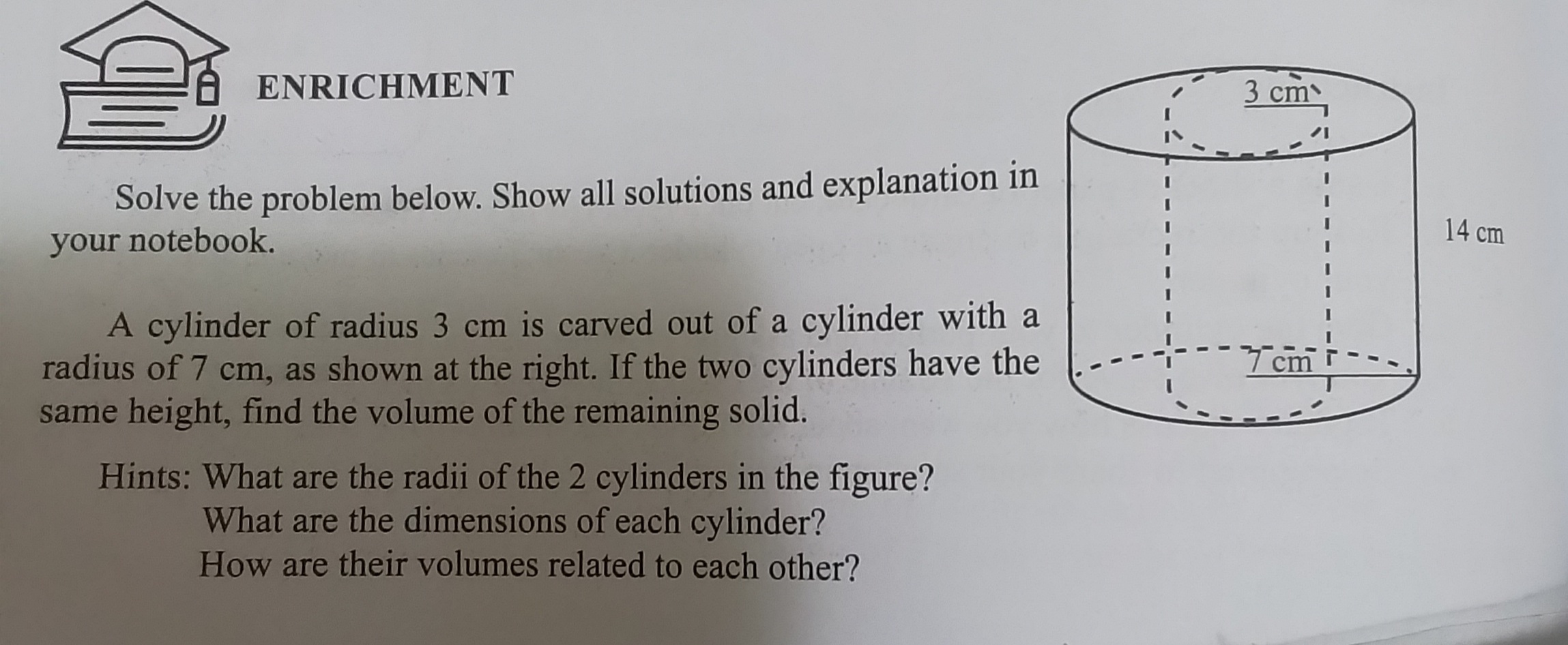A cylinder of radius 3 cm is carved out of a cylinder with a radius of 7 cm. If the two cylinders have the same height, find the volume of the remaining solid.

Understand the Problem
The question requires calculating the volume of a remaining solid after carving a smaller cylinder out of a larger one. The dimensions of both cylinders are provided, and we need to consider the heights and radii to find the volume difference.
Answer
$560\pi \, \text{cm}^3$
Answer for screen readers
The volume of the remaining solid is $560\pi , \text{cm}^3$.
Steps to Solve
-
Identify the dimensions of both cylinders
The larger cylinder has a radius of $R = 7$ cm and a height of $h = 14$ cm.
The smaller cylinder has a radius of $r = 3$ cm and shares the same height of $h = 14$ cm. -
Calculate the volume of the larger cylinder
The volume $V_L$ of a cylinder is given by the formula:
$$ V = \pi r^2 h $$
For the larger cylinder:
$$ V_L = \pi (7)^2 (14) = \pi (49)(14) = 686\pi , \text{cm}^3 $$ -
Calculate the volume of the smaller cylinder
Using the same volume formula for the smaller cylinder:
$$ V_S = \pi (3)^2 (14) = \pi (9)(14) = 126\pi , \text{cm}^3 $$ -
Find the volume of the remaining solid
To find the volume of the remaining solid, subtract the volume of the smaller cylinder from the volume of the larger cylinder:
$$ V_{remaining} = V_L - V_S = 686\pi - 126\pi = 560\pi , \text{cm}^3 $$ -
Present the final answer
The volume of the remaining solid is expressed as:
$$ V_{remaining} = 560\pi , \text{cm}^3 $$
The volume of the remaining solid is $560\pi , \text{cm}^3$.
More Information
The volume of a cylinder can be used to calculate how much space it occupies. In this case, we used the same height for both cylinders, simplifying our calculations.
Tips
- Mixing up the radii for the two cylinders can lead to incorrect volume calculations.
- Forgetting to use correct units (e.g., leaving out cm³) can confuse the answer.
AI-generated content may contain errors. Please verify critical information